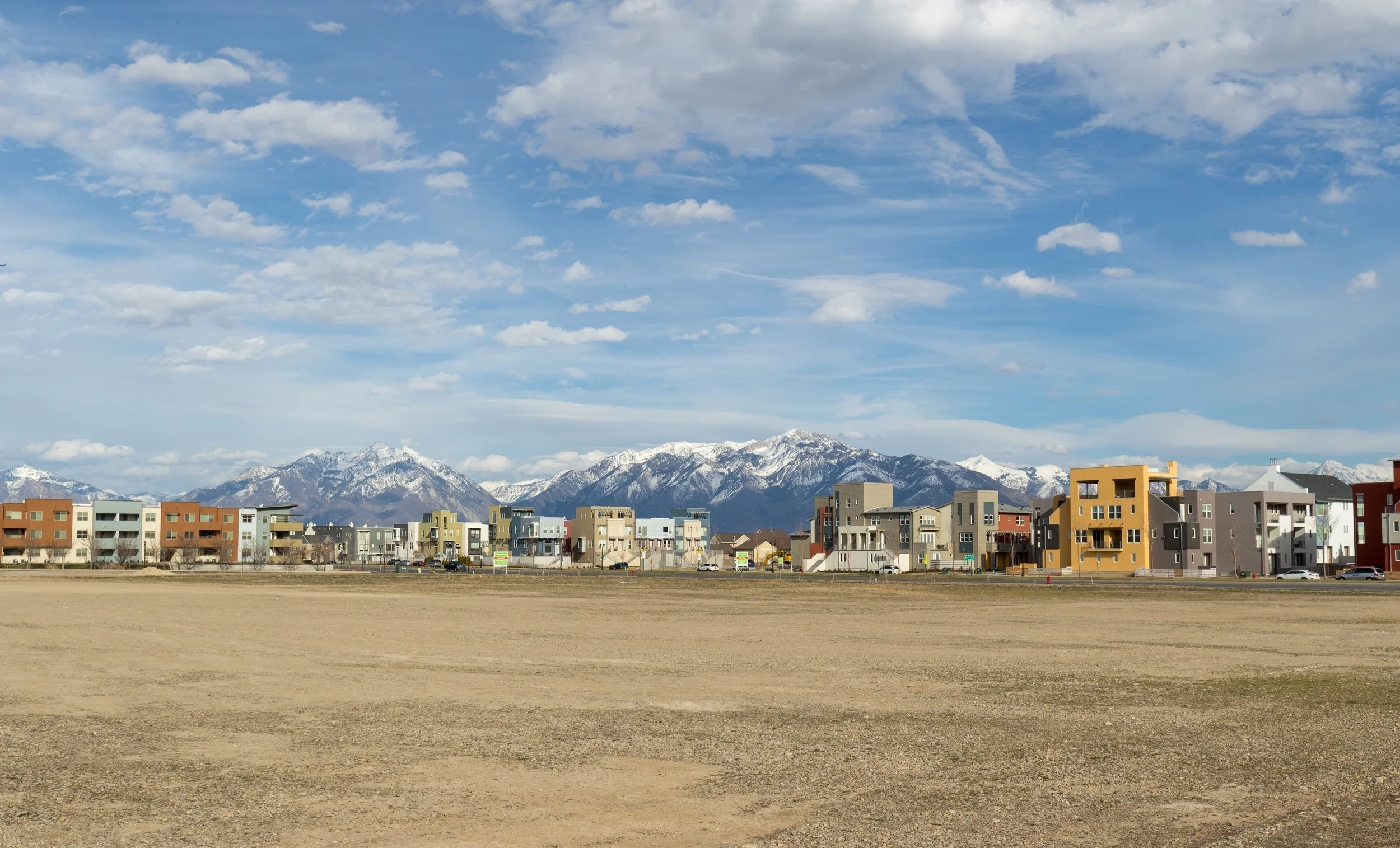The headlines keep coming: there’s public pushback about some development project because it’s “too dense.” Inevitably, whenever a developer proposes something, one of the first questions is how dense it is. But instead we should be asking how the project is designed. Will it accommodate our growth in a way that will lead to a high quality of life for ourselves and our children?
Density battles have come to a head because we’ve been one of the fastest-growing states in the country for the last several years. A strong economy means our kids—who form the majority of our growth—can find jobs and stay close to home. It also means other people want to join us here to experience our prosperity and quality of life.
At the same time, we’re running out of land in our most urbanized counties. Salt Lake, Davis, and Weber each have dwindling land supplies, as does northeast Utah County. In the past, as we grew we could just add another ring of suburbs, but now that next ring is on the other side of a mountain range. That’s why Wasatch County, for example, is the fourth fastest-growing county in the country.
That’s also why we’re now seeing as many apartments, condos, and townhomes as we are single-family homes; as land supply dwindles, prices rise, and people choose something smaller that they can afford. Accommodating the kinds of housing people can afford means more density. If we want to keep any semblance of affordability, we need to make sure we have ample supply of all kinds of housing, particularly in the places where there’s high demand.
That increased density isn’t necessarily a bad thing. It means we use less water, develop less agricultural land, and spend less money on infrastructure. It means our firefighters, police officers, nurses, and teachers can afford to live in the neighborhoods they serve. But how and where we build that density has huge implications for traffic, air quality, and quality of life. Not all density is created equal. Los Angeles, for example, is one of the densest metro areas in the country, but few of us would probably to aspire to be like Southern California when it comes to traffic issues.
The problem is that L.A.’s density isn’t well organized or planned. Density near rail stations, jobs, and shopping can reduce driving by 50% or even more, particularly if the development is designed to accommodate pedestrians and cyclists, rather than just cars. Where there’s a grid system of streets—think downtown Salt Lake City, for example—as well as larger roads like freeways, it’s easier to accommodate growth and density without overwhelming the road system.
But simply spreading density everywhere without planning the rail, roads, jobs, and shopping to go with it doesn’t give you the same bang for your buck. That’s why your community should identify where to put village and town centers—downtowns that include jobs, shopping, and dense housing, planned in coordination with public transportation and a connected grid of roadways. The more we mix the jobs, shopping, and housing, the greater the benefits. And the more connected our developments are, the better; if it’s easy to get from the housing to the jobs and shopping, we won’t see as much driving.
If we do this, we’ll accommodate the housing people want and can afford. We’ll use less farmland and water. We’ll ensure people can still get around despite our growth. We’ll minimize the impact on existing single-family neighborhoods. And we’ll create the kinds of town and village centers our grandparents used to enjoy—places where you can walk with your children to buy an ice cream cone, or where workers can walk to lunch. But it’s about far more than just density. It’s about design. Because how we grow matters.

